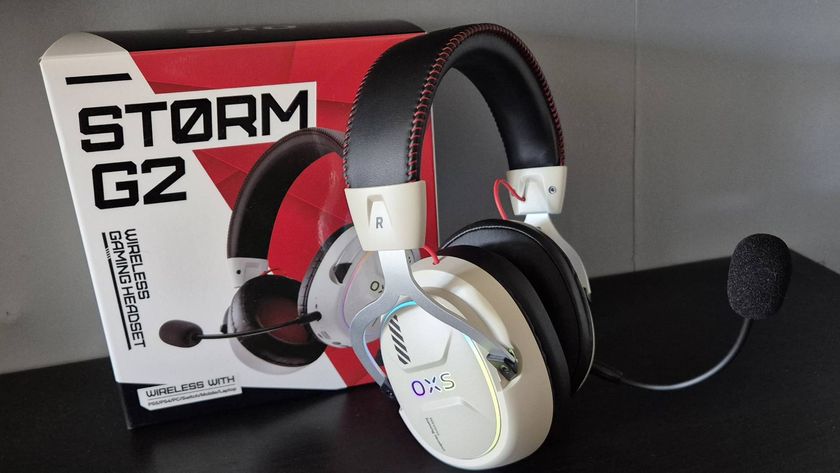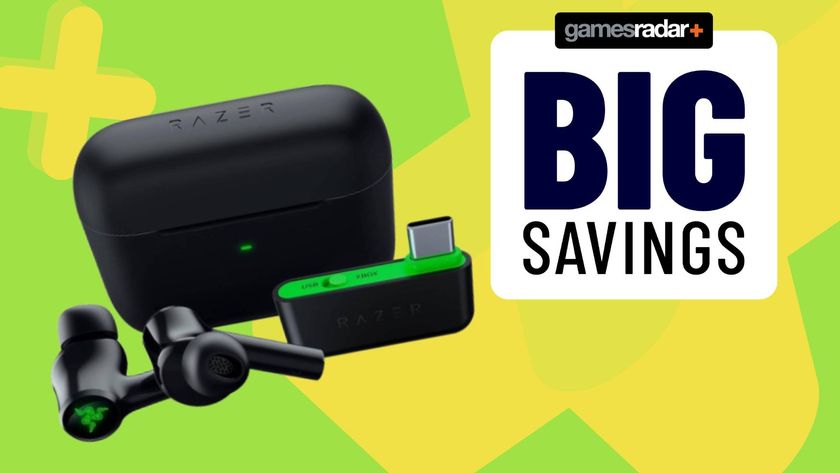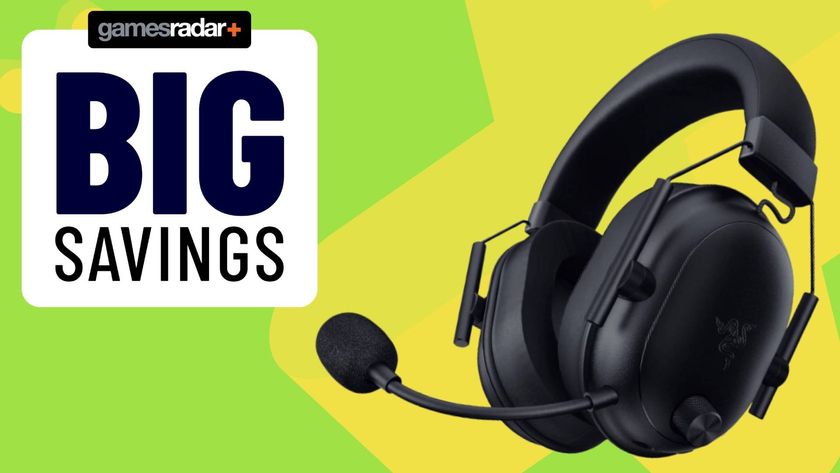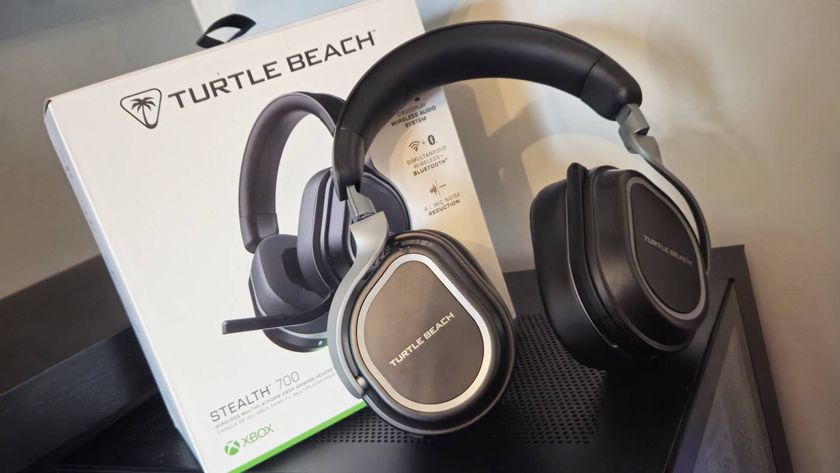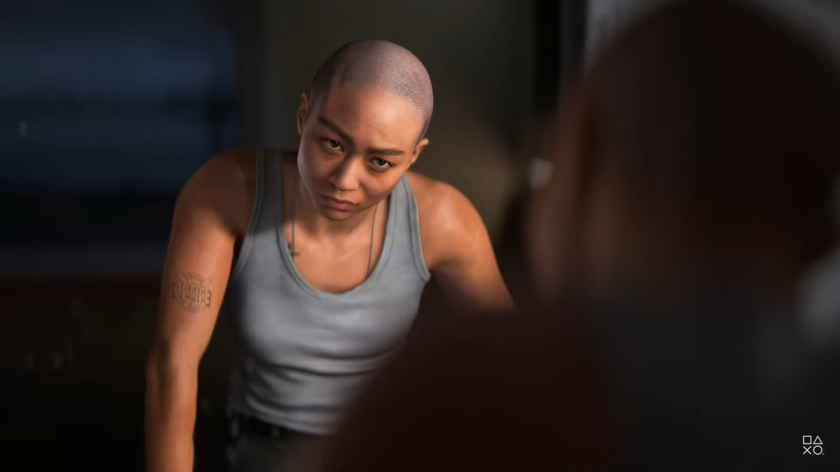I still can't see the future for AR gaming after wearing the $2,295 Magic Leap headset
Even the creative minds at Weta Workshop aren't enough to justify the entry fee

It's not every day that I get to be underwhelmed by a $2,295 piece of technology. But such was the case while demoing Magic Leap, an augmented reality headset that debuted earlier this year. To be honest, I didn't know Magic Leap by name until recently, so I was largely unaware of the years of hype and the staggering $2.3 billion in funding (with Google tossing in more than $500 million of that) leading up to this wearable tech. Along with Microsoft's HoloLens, Magic Leap is at the forefront of the AR (or MR, for mixed reality) space, where digital creations roam around a view of your real-world surroundings. It's hailed as an immensely exciting frontier for interactive entertainment, yet I just can't envision the day when Magic Leap's AR is a must-have for the gaming populace.
On the eve of LeapCon, Magic Leap's self-aggrandizing debut conference in Los Angeles, I was invited to try out Magic Leap One, officially known as the "Creator Edition" for being marketed towards developers rather than everyday consumers. The headset has three main parts: the Lightwear, which gently rests on the crown of your head, the Lightpack, a hockey puck-sized computer powering the headset that you can clip to your pocket or wear with a shoulder strap, and the simply named Control remote. Dr. Grordbort’s Invaders would be my first demo of the day - a first-person shooting gallery game made by Weta Workshop, the famed New Zealand special effects studio that's had a hand in blockbuster films like The Lord of the Rings, Thor: Ragnarok, and many, many more. I was led into a fantastic room that would be right at home in Disneyland, filled with all manner of lovingly crafted props - alien heads as mounted trophies, models of retrofuture ray guns, rare intergalactic specimens in jars - and LA actors dressed as scientists or the Saxton Hale-esque hunter Lord Cockswain.
It was here that Rony Abovitz, Magic Leap's CEO who made his fortune on the hospital robotics of MAKO Surgical Corp. (and performed one of the wankiest TEDx talks of all time), said something that gave me pause regarding AR gaming's viability. "It lives in the world and needs the world to be there; it actually needs physicality," said Abovitz during a moderated Q&A alongside Weta Workshop founder and creative director Richard Taylor and Dr. Grordbort's creator Greg Broadmore (also of Weta). "We don't need to overwhelm everything with our system. This allows all the rest of the art to breathe - you've got the room, you've got sculptures, you've got paintings - and when you layer in what we do [with Magic Leap], it all comes together. It's completely different from VR, which takes over everything."
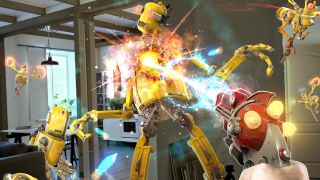
In other words, Magic Leap's experiences can't stand on their own - they need a backdrop. But unless you're Peter Jackson or Guillermo del Toro, there's no way your living room has the same immersive, world-building props and accoutrements as this lavish demo station. The average person is going to see these robots emerging from the walls of rooms they occupy every day, and that familiarity will no doubt detract from a lot of the novelty.
Seeing isn't really believing
As a first-time AR user, let me tell you: there are some serious problems that can be hard to visualize until you see them for yourself. For starters, the Magic Leap's relatively simplistic graphics and rectangular field of view feel quite limiting. It's like viewing a mobile phone game through a mail slot. Dr. Grordbort’s Invaders - now available for free to anyone who owns a Magic Leap One - is a straightforward shooter that pits you against an army of chunky yellow robots who pour into the room via portholes that open up in the walls. You're first greeted by Gimble, a friendly floating 'bot who brings Borderlands' Claptrap to mind. He sets the invasion scene, then hides away when enemies show up (still shown peering through a small window if you look off to the side). With the trusty Waveblaster 6000 pistol overlaid on the controller, I reduced waves of my mechanical assailants to scrap, even firing through their point of entry to destroy a power crystal in their side of the simulation.
Midway through the demo, I asked one of the event staff if my Waveblaster was supposed to be overlaid exactly over the Control remote, as there was a noticeable discrepancy between the real-world and virtual trigger placements. Perhaps I could easily recenter the view, as with a PlayStation VR headset? I was told that, unfortunately, results may vary when it comes to in-game props overlapping with physical objects. While this conversation was happening, I was getting wailed on by a Punch-O-Tron (actual name) that had gotten up in my grill - and it occurred to me just how much these AR games rely on you playing along, much like this "freaking crazy" demo of HoloLens. If you're not hamming it up and treating incoming attacks like life-threatening dangers, these shooting galleries and their nonexistent stakes reveal themselves to be extremely boring.
It's also shockingly easy for your immersion to be shattered - all it takes is holding your hand up in front of your face. Object occlusion is a massive hurdle for AR at the moment. Niantic has only just started tackling this problem in Pokemon Go's AR+ mode, which you can see in the video above (with mildly impressive results). When I can see robots in the distance overlaid on the hand that's directly in front of me, Dr. Grordbort’s invaders immediately feel weightless and fake. I also found that if my gaze strayed too far down, I could clearly see the shards of rainbow light beaming the images in front of my view. You'd think this was a sizing issue, but I had already configured the headset precisely to my noggin using the Magic Leap companion app, going so far as holding a magnetic stripe card over my eyebrows in order to measure my interpupillary distance.
Sign up to the 12DOVE Newsletter
Weekly digests, tales from the communities you love, and more
After I fought Dr. Grordbort’s Invaders, I also got to try a demo of Angry Birds built for Magic Leap. Those pesky green pigs and their flimsy forts were resting atop a real-world table, but they didn't seem all too sturdy, quivering and refusing to stay perfectly still in one place while I walked around the table to aim my feathered munitions. It was about as fun and surprising as you'd expect an Angry Birds game to be in 2018.
Being around the folks giving and receiving the Magic Leap demos, I got the sense that some of them are pounding the Kool-Aid like they're in a brand loyalty chugging contest. During that same panel, Weta's Richard Taylor put AR in league with such breakthrough moments as the creation of cave paintings, cuneiform, and, I quote, "the handwriting of the Bible." "This isn't a piece of technology that can really be compared to things that have come before it," said Taylor. "It stands alone, and is unique." But when VR games (which, for all their progress, are still struggling to break into the mainstream market) make AR feel like little more than one-note light shows, it's hard to sell such an expensive device. For comparison, the first Oculus Rift development kit cost $300, a fraction of the Magic Leap One's $2,295 asking price.
Even if Dr. Grordbort’s Invaders had played exactly like the faked concept video from 2015 (which you can see above), I still don't think I'd be too stoked. When it comes down to it, there's nothing all that exciting about a virtual entity that looks like it's standing on your coffee table or work desk, and which you may or may not be able to shoot at. The only worthwhile AR gaming experience I can imagine would be a horror game that makes you believe ghouls and ghosts are actually hiding around every corner of your house - though who knows if that could hold a candle to the scares of Resident Evil 7 in VR. Like the Magic Leap whale that made a splash despite being nowhere close to the reality of the actual tech, AR gaming feels like a mirage - a nice idea that simply hasn't been realized. I don't think you'd be missing much if you ignored AR gaming for years to come, so don't worry about dropping two grand on a headset any time soon.
If you're still looking to get into the headset game, PlayStation VR is now more affordable than ever.
Lucas Sullivan is the former US Managing Editor of 12DOVE. Lucas spent seven years working for GR, starting as an Associate Editor in 2012 before climbing the ranks. He left us in 2019 to pursue a career path on the other side of the fence, joining 2K Games as a Global Content Manager. Lucas doesn't get to write about games like Borderlands and Mafia anymore, but he does get to help make and market them.

